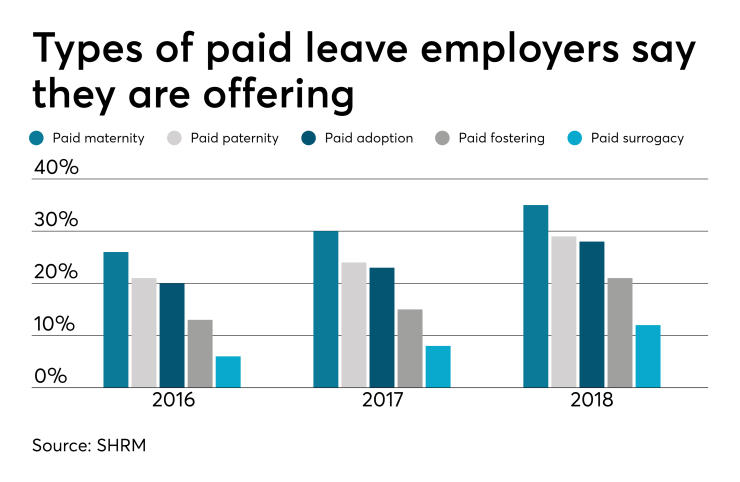LAS VEGAS – A steady job market and strong economy have kept employers on their feet, enhancing benefits offerings to remain competitive in their attraction and retention efforts.
While some benefit programs, such as student loan repayment programs, have grown in popularity, others — including dependent care — have been on the decline, according to the Society for Human Resource Management’s annual study.
The study brings a greater understanding of what strategies employers are using to be more competitive, said Alex Alonso, SHRM’s chief knowledge officer, speaking this week at the organization’s annual conference.
There are a few drivers that are changing the way employers approach strategizing benefit offerings, such as the rising cost of health insurance and the Tax Cuts and Jobs Act of 2017, according to the study.

Another major driver is the multigenerational workforce. Baby boomers, Gen X and millennials form the majority of the workforce, but most organizations include members of the older Traditionalists and younger Gen Zs as well. Employees in different life stages may want and need different benefits. While employers cannot afford to offer the best of every benefit, they can ill afford to underinvest in the benefits that are most important to their employees.
“Finding the right combination of benefits that appeals to a multigenerational workforce can be a challenge,” Alonso said. “But if you know a good portion of your workforce are baby boomers with aging parents, you might choose to beef up your caregiving benefits and flexible scheduling policies.”
Paid leave benefits have remained a topic of ongoing discussion in the last several years, the report notes, with time off policies for new parents continuing to be a hot benefit and one of the most discussed kinds of paid leave.
In the past few months, Sweetgreen and
While 2018 saw statistically significant increases on all types of paid parental leave, this year many of those changes had stabilized, with all types of paid parental leave remaining within two percentage points of their 2018 measure, according to SHRM. Parental leave of all types will likely remain a topic of discussion through 2020, with elections bringing potential for changes in federal law, the study notes.
Healthcare benefits, being one of the most coveted perks by employees, also continue to increase as the economy improves and the legislative landscape changes.
“One thing we’re seeing is the PPO remains a popular health option, however we’re also seeing HDHP linked to an HSA or other spending account becoming more available,” Alonso said. HDHPs not linked to an HSA or HRA have dropped by about 10%, he added.
Telemedicine and telehealth services are also on the rise, Alonso said. Telemedicine workplace offerings have risen to 72% in 2019 from just 23% in 2016.
“[That’s] giving employers an opportunity to make a convenient healthcare option and a specific benefit to individuals who don’t quite have easy access to healthcare options,” Alonso said.
Financial wellness and retirement benefits also have been making some changes. Nearly all employers surveyed say they offer one or more type of DC plan, with 93% offering a traditional 401(k) or similar plan, and 59% offering a Roth 401(k) or similar plan. Employer matches for 401(k) plans also held steady with about 75% of employers offering a match over the last five years.
Although still somewhat uncommon, the percentage of employers offering student loan repayment benefits doubled in the past year to 8% from 4% last year.
“One of the things we’re seeing really on the rise is student loan repayment benefits,” Alonso said. “SHRM is advocating on the hill for the adoption or passing of a law that supports employer-provided student loan repayment tax benefits. We’re very much behind this data trend.”
Not wanting to wait, some employers including





